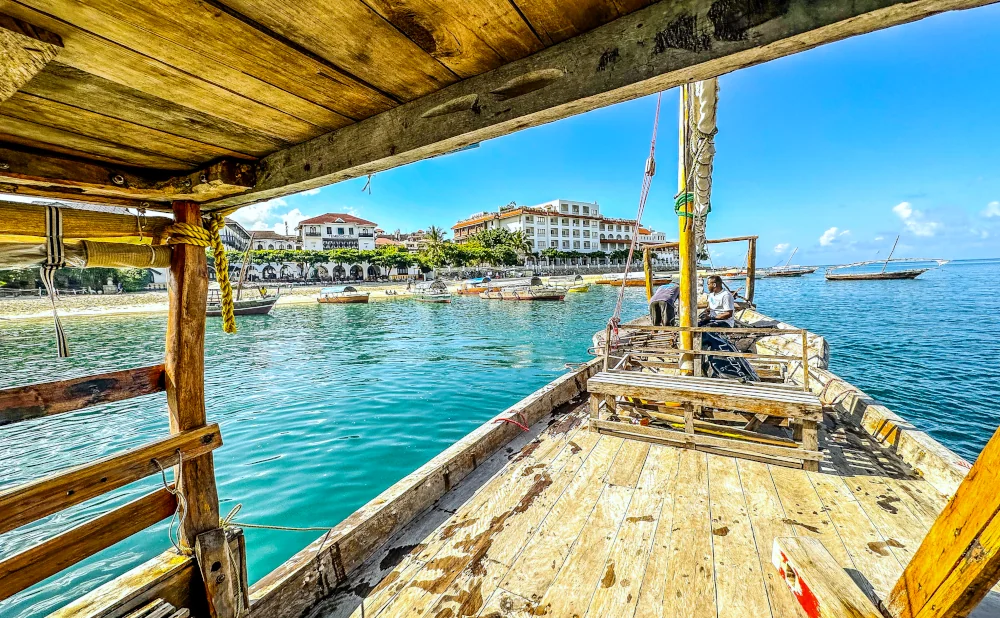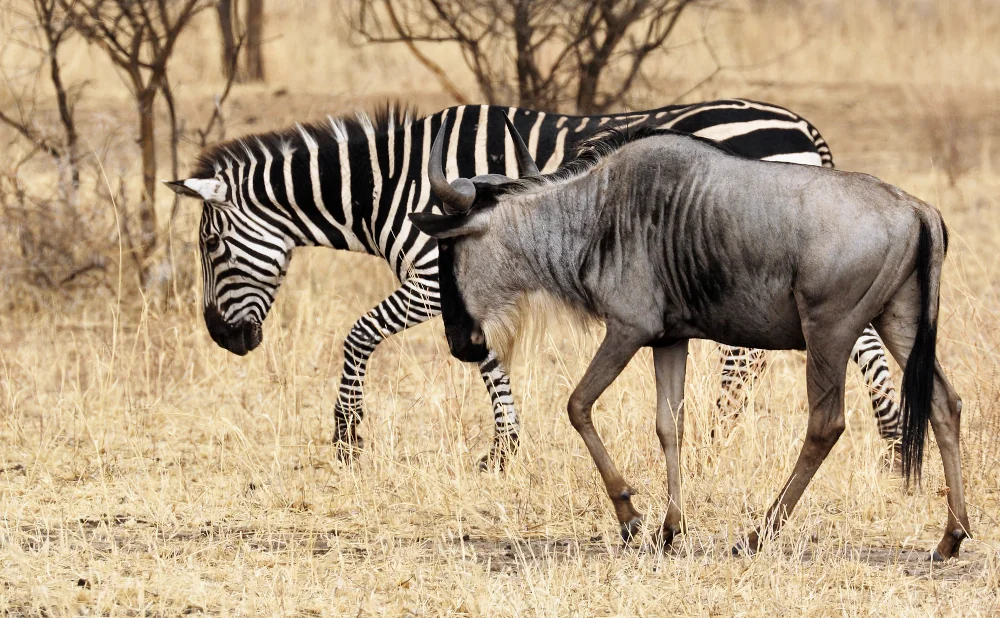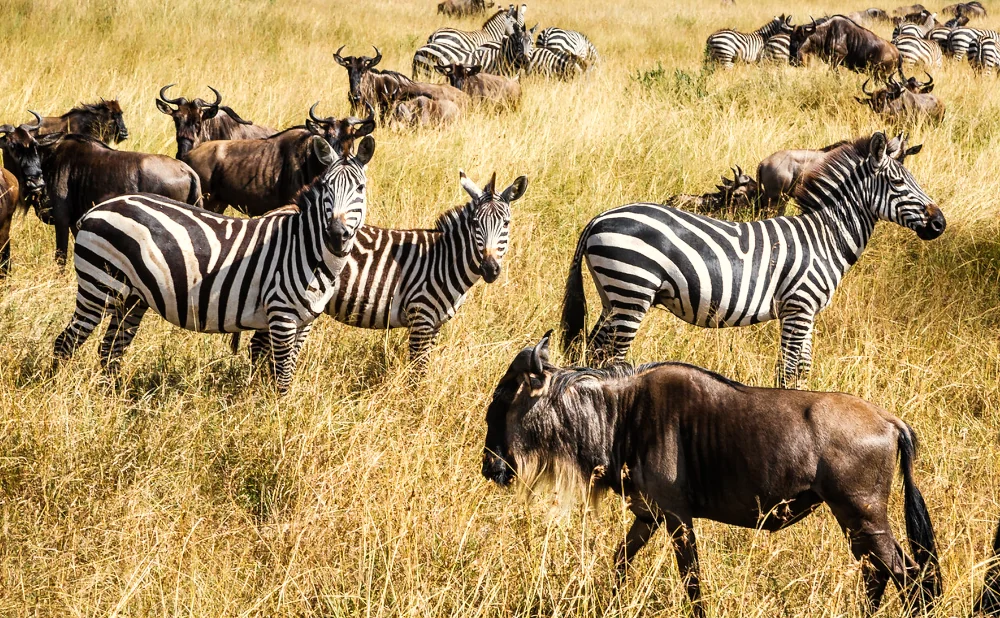Ngorongoro Crater

Certainly! Here's an extensive list of 50 facts about the Ngorongoro Crater, one of Tanzania's most remarkable natural wonders:
1. Location: Ngorongoro Crater is located in northern Tanzania.
2. Part of: It is part of the larger Ngorongoro Conservation Area.
3. UNESCO Status: The crater was designated a UNESCO World Heritage Site in 1979.
4. Formation:Ngorongoro Crater is a volcanic caldera formed when a large volcano exploded and collapsed approximately two to three million years ago.
5. Size:The crater is about 20 kilometers (12 miles) in diameter and covers an area of 264 square kilometers (102 square miles).
6. Depth:The crater floor is about 610 meters (2,000 feet) below the rim.
7. Elevation: The elevation of the crater rim is approximately 2,286 meters (7,500 feet) above sea level.
8. Wildlife Density:The crater is renowned for having one of the highest densities of wildlife in Africa.
9. Big Five: The Big Five (lion, leopard, elephant, buffalo, and rhinoceros) can all be found in the crater.
10. Black Rhinos It is one of the few places in Tanzania where the endangered black rhino can be seen.
11 Lions: The crater is home to a significant lion population, known for its large prides.
12. Elephants: Elephants in the crater are often older males, with fewer females and young.
13. Buffaloes: Large herds of buffalo roam the crater floor.
14. Leopards: While leopards are present, they are more elusive and harder to spot.
15. Hyenas: Spotted hyenas are common and often seen in large numbers.
16. Hippos: The crater has several water bodies that support a healthy hippo population.
17. Wildebeest: Thousands of wildebeest inhabit the crater, part of the broader Serengeti ecosystem.
18. Zebras: Zebras are also abundant in the crater.
19. Gazelles: Both Grant's and Thomson's gazelles can be found in the crater.
20. Flamingos:The crater's lake, Lake Magadi, attracts flocks of flamingos.
21. Bird Species: Over 500 bird species have been recorded in the Ngorongoro Conservation Area.
22. Seasonal Variations: Wildlife viewing varies with the seasons, with different animals visible at different times of the year.
23. Conservation Area: The Ngorongoro Conservation Area covers 8,292 square kilometers (3,202 square miles).
24. Multiple Ecosystems: The conservation area includes multiple ecosystems such as savannah, woodlands, and forests.
25. Human Habitation: The area is unique for allowing human habitation and wildlife to coexist.
26. Maasai People: The Maasai people live in the Ngorongoro Conservation Area and are allowed to graze their cattle on the crater floor.
27. Olduvai Gorge:mThe Ngorongoro Conservation Area includes Olduvai Gorge, a site of major archaeological significance.
28. Archaeological Finds: Olduvai Gorge has yielded some of the earliest evidence of human ancestors.
29. Laetoli Footprints: The Laetoli site within the conservation area is famous for hominid footprints preserved in volcanic ash.
30. Crater Floor: The floor of the crater consists of open grassland, a soda lake, and acacia woodland.
31. Lake Magadi: A shallow soda lake on the crater floor, attracting numerous bird species.
32. Munge Stream: The stream feeds into Lake Magadi and is a vital water source for the crater's wildlife.
33. Lerai Forest: A lush forest area on the crater floor, home to various wildlife species.
34. Ngorongoro Highlands: The highlands around the crater offer stunning views and diverse ecosystems.
35. Conservation Efforts: Ongoing efforts are made to balance wildlife conservation with the needs of the Maasai people.
36. Visitor Numbers: The Ngorongoro Conservation Area receives hundreds of thousands of visitors annually.
37. Safari Activities: Popular activities include game drives, walking safaris, and cultural tours.
38. Accommodation: There are several lodges and campsites on the crater rim offering spectacular views.
39. Weather: The weather can be cooler and wetter on the crater rim compared to the floor.
40. Fog: The crater rim is often shrouded in fog, especially in the early morning.
41. Crater Descent: A steep road leads from the crater rim to the floor, offering breathtaking views.
42. Historical Significance: The area has a long history of human habitation and interaction with wildlife.
43. Cultural Heritage: The Maasai maintain their traditional way of life, adding cultural value to the area.
44. Safari Guides: Knowledgeable guides provide insights into the area's wildlife and history.
45. Photographic Opportunities: The crater offers unparalleled opportunities for wildlife photography.
46. Biodiversity Hotspot: The unique combination of geology, climate, and human influence makes the crater a biodiversity hotspot.
47. Conservation Challenges: Balancing tourism, conservation, and local livelihoods presents ongoing challenges.
48. Ecological Importance: The crater's ecosystems play a crucial role in the broader Serengeti-Mara ecosystem.
49. Research Opportunities: The area provides valuable opportunities for ecological and archaeological research.
50. Tourism Revenue: Revenue from tourism supports conservation efforts and local communities.










